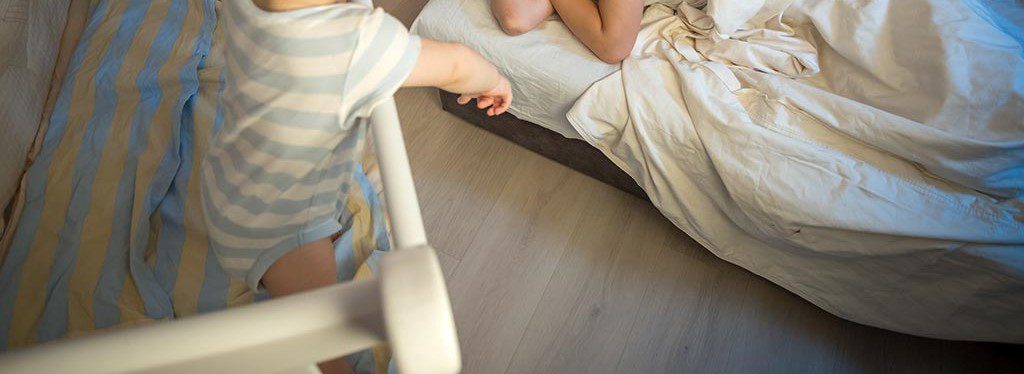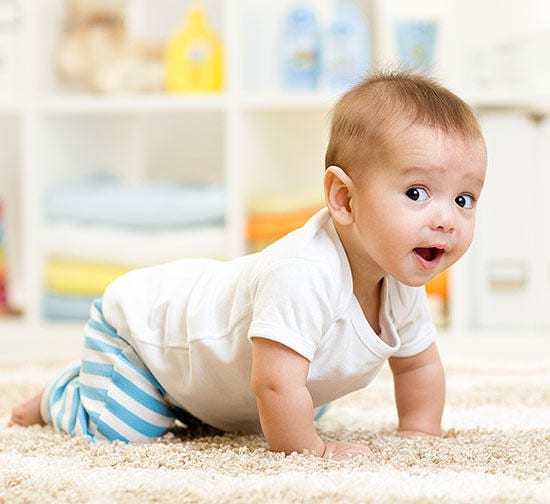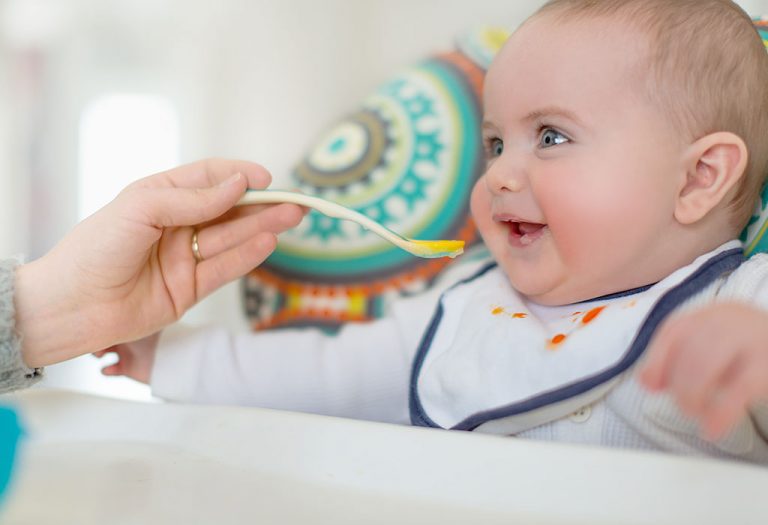Parent-Child Interaction Therapy (PCIT) Many parents have difficulty controlling their child's temper tantrums. Anger Their children or feel embarrassed by their children's behavior in public places, Instead of punishing them for their destructive and difficult behaviors, it is recommended to try parent-child interaction therapy.

Parent-Child Interaction Therapy (PCIT), originally developed by Dr. Sheila Eiberg, is a unique and effective treatment program that focuses on improving positive parent-child interactions and relationships.
Parent-Child Interaction Therapy (PCIT) addresses the relationship between parents and children, and most importantly, their relationships. Each family changes one interaction at a time!
Do you need: Gummies for children - how safe are they, benefits and risks?
What is Parent-Child Interaction Therapy (PCIT)?
It is a short-term, evidence-based parent training program designed primarily to improve positive parent-child interactions for families with children between the ages of approximately 2 and 7 years.
In PCIT, the therapist works with the family to manage child's behavior , when it occurs during therapy sessions. With the help of a therapist, practicing certain techniques increases parents' confidence in independently managing their children's behavior in public and at home. On average, it takes a family about four months to complete the program, with weekly hour-long sessions.
Do you need: Behavior charts to motivate children - what are their benefits and how to use them?
Who can help with PCIT?
The effectiveness of Parent-Child Interaction Therapy (PCIT) has been demonstrated by numerous studies conducted over the past decades.
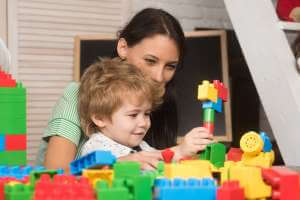
In a study conducted in 2011, children aged 8-10 years who had linguistic weakness Specifically, those treated with PCIT made better language gains than those in the control group.
In another 2011 study, about 150 mothers with a history of child abuse were divided into two groups.
One group participated in PCIT, while the other group was still on the waiting list. After a three-month period, mothers who were part of the PCIT group were observed to have improved parent-child interactions, reported less stress, and improved child behavior.
This approach is a highly effective way to reduce common childhood behavioral problems such as defiance, noncompliance, aggression, and short temper, and has been shown to have the greatest impact on children aged 2–7 years. PCIT has become a widely used intervention for at-risk families because it promotes healthy relationships between children and parents.
This approach is often used with adoptive and foster families and by people in the child welfare system, but it is also seen as helpful for any family experiencing problems with child-parent interaction.
Do you need: Parental alienation, how to deal with it and protect your child's psyche from it?
Benefits of Parent-Child Interaction Therapy
- Develop positive parenting strategies. Build positive parent-child interactions.
- Reducing behavioral problems in children (aggression, defiance, anger, etc.). Reducing the potential for verbal and physical abuse of children.
- Increase interaction and communication skills within the family.
Children participating in PCIT may experience less frustration They also develop better self-esteem, improve organizational, social, and play skills, feel calm and secure, and communicate more effectively with their parents. Parents typically learn consistent parenting techniques and may have greater confidence in handling their child's behavior, both at home and in public.
Do you need: Journaling for children, benefits, what parents should know about it?
How does Parent-Child Interaction Therapy (PCIT) work?
In parent-child interaction therapy, parents have ample opportunities to learn new skills and techniques that can help them provide a nurturing, caring, and loving environment for their young children. The ultimate goal of therapy is to help transform negative behaviors To more positive patterns.
The program consists of Parent-child interaction therapyPCIT has two stages:
Promotes relationships, compliance, and discipline. At the beginning of the program, the therapist will discuss with parents the key techniques and principles for each phase.
The therapist will then observe the parents playing with their children using the techniques and skills they have learned through a one-way mirror.
The therapist can provide direct coaching to parents through an ear bug device. Targeted behaviors are observed and charted during sessions to highlight the progress made by both children and parents.
The Relationship Improvement phase helps parents learn to reduce any negative aspects of the parent-child relationship. It also guides them to develop better behavioral and positive communication skills that provide encouragement and support.
The Compliance and Improvement phase emphasizes safe and effective disciplinary practices that can help improve a child's behavior by managing and addressing the issues and symptoms that cause negative behaviors.
Parents are encouraged to practice these skills until they learn to use them with ease. Families experience dramatic improvements in the parent-child relationship after treatment.
Stages of Parent-Child Interaction Therapy (PCIT)
The training methods are specifically designed to help parents improve their language and parenting skills and to help children learn how to better control their emotions.
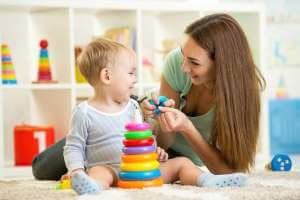
The first stage:
The relationship stage, also called the interaction stage with the child, aims to strengthen and improve the bonds between children and parents.
The child decides which toys or activities will be used for play, and the parents play under the guidance of the therapist, utilizing positive reinforcement skills they learned previously in therapy.
These skills are represented by the acronym PRIDE and are:
Pride: The parent praises the child for appropriate and good behavior.
Meditation: Children's words are expanded and repeated by parents, which encourages communication.
tradition: Parents show approval and acknowledge their child's actions by repeating them.
the description: Parents describe the child's activities to help build vocabulary and show children that they care about the child's activities.
joyParents are enthusiastic about the activities the children do.
Parents are also encouraged to ignore any negative behaviors displayed by children that are harmless or dangerous. They are taught not to use negative words such as "no," "can't," "can't," etc., and to refrain from sarcasm and criticism.
Desired outcomes of the relationship stage include:
- Decreased intensity, frequency, and duration of tantrums.
- Decreased parental frustration.
- Decrease negative attention-seeking behaviors.
- Increased attention span.
- Increased feelings of safety, security, and attachment to the parent.
- Increase self-esteem.
- Increased social behaviors.
- The program typically progresses to Phase 2 once parents have mastered the skills from Phase XNUMX.
The second phase:
Discipline and Compliance Stage: In this stage, the parent takes the lead. As part of treatment, parents learn to provide their children with easy-to-understand, straightforward instructions with clear, consistent consequences for disobedience and obedience.
Parents will learn strategies to help their child comply with their directions, accept their boundaries, demonstrate good behavior in public, and respect the house rules.
If the child listens, praise will be given with phrases such as, “Thank you for picking up your toys.” If the child does not listen, a parent will issue a time-out warning such as, “Pick up your toys or you will be given a time-out.” If noncompliance continues, a time-out procedure will be implemented.
Expected outcomes of the second phase include:
- Decreased frequency of aggressive behavior. Decreased frequency of destructive behavior.
- Low challenge.
- Increase respect for house rules.
- Increased compliance with an adult's request.
- Improving social behavior.
- Increase parental confidence and calm during discipline.
Article source: Parent-Child Interaction Therapy (PCIT) and Everything That You Need to Know

